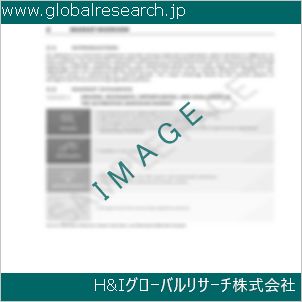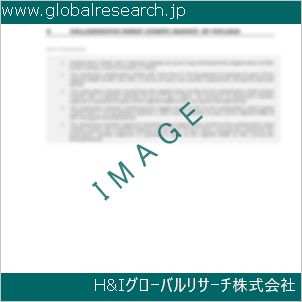Table of Contents
1 Industry Overview of P-Tolunitrile
1.1 Definition and Specifications of P-Tolunitrile
1.1.1 Definition of P-Tolunitrile
1.1.2 Specifications of P-Tolunitrile
1.2 Classification of P-Tolunitrile
1.3 Applications of P-Tolunitrile
1.3.1 Nuclear Application
1.3.2 Non-Nuclear Application
1.4 Industry Chain Structure of P-Tolunitrile
1.5 Industry Overview and Major Regions Status of P-Tolunitrile
1.5.1 Industry Overview of P-Tolunitrile
1.5.2 Global Major Regions Status of P-Tolunitrile
1.6 Industry Policy Analysis of P-Tolunitrile
1.7 Industry News Analysis of P-Tolunitrile
2 Manufacturing Cost Structure Analysis of P-Tolunitrile
2.1 Raw Material Suppliers and Price Analysis of P-Tolunitrile
2.2 Equipment Suppliers and Price Analysis of P-Tolunitrile
2.3 Labor Cost Analysis of P-Tolunitrile
2.4 Other Costs Analysis of P-Tolunitrile
2.5 Manufacturing Cost Structure Analysis of P-Tolunitrile
2.6 Manufacturing Process Analysis of P-Tolunitrile
3 Technical Data and Manufacturing Plants Analysis of P-Tolunitrile
3.1 Capacity and Commercial Production Date of Global P-Tolunitrile Major Manufacturers in 2023
3.2 Manufacturing Plants Distribution of Global P-Tolunitrile Major Manufacturers in 2023
3.3 R&D Status and Technology Source of Global P-Tolunitrile Major Manufacturers in 2023
3.4 Raw Materials Sources Analysis of Global P-Tolunitrile Major Manufacturers in 2023
4 Capacity, Production and Revenue Analysis of P-Tolunitrile by Regions, Types and Manufacturers
4.1 Global Capacity, Production and Revenue of P-Tolunitrile by Regions 2019-2024
4.2 Global and Major Regions Capacity, Production, Revenue and Growth Rate of P-Tolunitrile 2019-2024
4.3 Global Capacity, Production and Revenue of P-Tolunitrile by Types 2019-2024
4.4 Global Capacity, Production and Revenue of P-Tolunitrile by Manufacturers 2019-2024
5 Price, Cost, Gross and Gross Margin Analysis of P-Tolunitrile by Regions, Types and Manufacturers
5.1 Price, Cost, Gross and Gross Margin Analysis of P-Tolunitrile by Regions 2019-2024
5.2 Price, Cost, Gross and Gross Margin Analysis of P-Tolunitrile by Types 2019-2024
5.3 Price, Cost, Gross and Gross Margin Analysis of P-Tolunitrile by Manufacturers 2019-2024
6 Consumption Volume, Consumption Value and Sale Price Analysis of P-Tolunitrile by Regions, Types and Applications
6.1 Global Consumption Volume and Consumption Value of P-Tolunitrile by Regions 2019-2024
6.2 Global and Major Regions Consumption Volume, Consumption Value and Growth Rate of P-Tolunitrile 2019-2024
6.3 Global Consumption Volume and Consumption Value of P-Tolunitrile by Types 2019-2024
6.4 Global Consumption Volume and Consumption Value of P-Tolunitrile by Applications 2019-2024
6.5 Sale Price of P-Tolunitrile by Regions 2019-2024
6.6 Sale Price of P-Tolunitrile by Types 2019-2024
6.7 Sale Price of P-Tolunitrile by Applications 2019-2024
6.8 Market Share Analysis of P-Tolunitrile by Different Sale Price Levels
7 Supply, Import, Export and Consumption Analysis of P-Tolunitrile
7.1 Supply, Consumption and Gap of P-Tolunitrile 2019-2024
7.2 Global Capacity, Production, Price, Cost, Revenue, Supply, Import, Export and Consumption of P-Tolunitrile 2019-2024
7.3 USA Capacity, Production, Price, Cost, Revenue, Supply, Import, Export and Consumption of P-Tolunitrile 2019-2024
7.4 EU Capacity, Production, Price, Cost, Revenue, Supply, Import, Export and Consumption of P-Tolunitrile 2019-2024
7.5 China Capacity, Production, Price, Cost, Revenue, Supply, Import, Export and Consumption of P-Tolunitrile 2019-2024
7.6 Japan Capacity, Production, Price, Cost, Revenue, Supply, Import, Export and Consumption of P-Tolunitrile 2019-2024
8 Major Manufacturers Analysis of P-Tolunitrile
8.1 Manufacturer One
8.1.1 Company Profile
8.1.2 Product Picture and Specifications
8.1.2.1 Type I
8.1.2.2 Type II
8.1.2.3 Type III
8.1.3 Capacity, Production, Price, Cost, Gross and Revenue
8.1.4 Contact Information
8.2 Manufacturer Two
8.2.1 Company Profile
8.2.2 Product Picture and Specifications
8.2.2.1 Type I
8.2.2.2 Type II
8.2.2.3 Type III
8.2.3 Capacity, Production, Price, Cost, Gross and Revenue
8.2.4 Contact Information
8.3 Manufacturer Three
8.3.1 Company Profile
8.3.2 Product Picture and Specifications
8.3.2.1 Type I
8.3.2.2 Type II
8.3.2.3 Type III
8.3.3 Capacity, Production, Price, Cost, Gross and Revenue
8.3.4 Contact Information
8.4 Manufacturer Four
8.4.1 Company Profile
8.4.2 Product Picture and Specifications
8.4.2.1 Type I
8.4.2.2 Type II
8.4.2.3 Type III
8.4.3 Capacity, Production, Price, Cost, Gross and Revenue
8.4.4 Contact Information
8.5 Manufacturer Five
8.5.1 Company Profile
8.5.2 Product Picture and Specifications
8.5.2.1 Type I
8.5.2.2 Type II
8.5.2.3 Type III
8.5.3 Capacity, Production, Price, Cost, Gross and Revenue
8.5.4 Contact Information
…
9 Marketing Trader or Distributor Analysis of P-Tolunitrile
9.1 Marketing Channels Status of P-Tolunitrile
9.2 Traders or Distributors with Contact Information of P-Tolunitrile by Regions
9.3 Ex-work Price, Channel Price and End Buyer Price Analysis of P-Tolunitrile
9.4 Regional Import, Export and Trade Analysis of P-Tolunitrile
10 Industry Chain Analysis of P-Tolunitrile
10.1 Upstream Major Raw Materials Suppliers Analysis of P-Tolunitrile
10.1.1 Major Raw Materials Suppliers with Contact Information Analysis of P-Tolunitrile
10.1.2 Major Raw Materials Suppliers with Supply Volume Analysis of P-Tolunitrile by Regions
10.2 Upstream Major Equipment Suppliers Analysis of P-Tolunitrile
10.2.1 Major Equipment Suppliers with Contact Information Analysis of P-Tolunitrile
10.2.2 Major Equipment Suppliers with Product Pictures Analysis of P-Tolunitrile by Regions
10.3 Downstream Major Consumers Analysis of P-Tolunitrile
10.3.1 Major Consumers with Contact Information Analysis of P-Tolunitrile
10.3.2 Major Consumers with Consumption Volume Analysis of P-Tolunitrile by Regions
10.4 Supply Chain Relationship Analysis of P-Tolunitrile
11 Development Trend of Analysis of P-Tolunitrile
11.1 Capacity, Production and Revenue Forecast of P-Tolunitrile by Regions and Types
11.1.1 Global Capacity, Production and Revenue of P-Tolunitrile by Regions 2024-2029
11.1.2 Global and Major Regions Capacity, Production, Revenue and Growth Rate of P-Tolunitrile 2024-2029
11.1.3 Global Capacity, Production and Revenue of P-Tolunitrile by Types 2024-2029
11.2 Consumption Volume and Consumption Value Forecast of P-Tolunitrile by Regions, Types and Applications
11.2.1 Global Consumption Volume and Consumption Value of P-Tolunitrile by Regions 2024-2029
11.2.2 Global and Major Regions Consumption Volume, Consumption Value and Growth Rate of P-Tolunitrile 2024-2029
11.2.3 Global Consumption Volume and Consumption Value of P-Tolunitrile by Types 2024-2029
11.2.4 Global Consumption Volume and Consumption Value of P-Tolunitrile by Applications 2024-2029
11.3 Supply, Import, Export and Consumption Forecast of P-Tolunitrile
11.3.1 Supply, Consumption and Gap of P-Tolunitrile 2024-2029
11.3.2 Global Capacity, Production, Price, Cost, Revenue, Supply, Import, Export and Consumption of P-Tolunitrile 2024-2029
11.3.3 USA Capacity, Production, Price, Cost, Revenue, Supply, Import, Export and Consumption of P-Tolunitrile 2024-2029
11.3.4 EU Capacity, Production, Price, Cost, Revenue, Supply, Import, Export and Consumption of P-Tolunitrile 2024-2029
11.3.5 China Capacity, Production, Price, Cost, Revenue, Supply, Import, Export and Consumption of P-Tolunitrile 2024-2029
11.3.6 Japan Capacity, Production, Price, Cost, Revenue, Supply, Import, Export and Consumption of P-Tolunitrile 2024-2029
12 New Project Investment Feasibility Analysis of P-Tolunitrile
12.1 New Project SWOT Analysis of P-Tolunitrile
12.2 New Project Investment Feasibility Analysis of P-Tolunitrile
13 Conclusion of the Global P-Tolunitrile (CAS 104-85-8) Industry 2024 Market Research Report
| ※参考情報 p-トルニトリル(p-Tolunitrile)は、化学式 C₇H₇N を持つ有機化合物で、CAS番号は 104-85-8 です。この化合物はトルエンのベンゼン環にニトリル基(-C≡N)が結合した構造を持ち、特に p-位に位置しています。p-トルニトリルは、無色または淡黄色の液体であり、特有の香りを持ちます。 p-トルニトリルの特徴としては、まずその化学的性質が挙げられます。比較的低い融点(約 23.7 ℃)と沸点(約 195 ℃)を持ち、揮発性があることが特徴です。また、水には非常に溶けにくいですが、有機溶媒にはよく溶ける性質があります。このため、p-トルニトリルは様々な合成反応において中間体や溶媒として利用されることが多いです。 さらに、p-トルニトリルの反応性も興味深い点です。ニトリル基を持つため、炭素-窒素結合が形成され、特に求核反応において重要な役割を果たします。また、酸性条件下や高温下では分解することがあるため、取り扱いには注意が必要です。 p-トルニトリルにはいくつかの種類があり、主に異性体としてはo-トルニトリルやm-トルニトリルが存在します。これらの異性体は、それぞれ異なる物理的および化学的性質を持ち、特定の用途に応じて使い分けられます。p-トルニトリルは、特にその安定性と反応性から、工業的に多く利用されます。 用途としては、p-トルニトリルは化学合成の中間体として使用され、特に医薬品や農薬の合成に重要です。ニトロ鹸基の導入は、医薬品の生合成において広く利用されており、p-トルニトリルを原料とした化合物が多くの医薬品に変換されます。 さらに、p-トルニトリルは化学材料の製造にも使用され、特に樹脂や繊維の合成において重要な役割を果たしています。加えて、この化合物は溶媒としても利用され、特に有機合成や分析化学において重要な役割を果たしています。 関連技術の面では、p-トルニトリルの合成プロセスが進化してきており、より効率的で環境に優しい手法が開発されています。伝統的な合成法に加え、触媒反応を利用した新しい合成ルートが注目されています。これにより、より高純度のp-トルニトリルを効率的に生産できるようになり、製造コストの削減にも寄与しています。 また、p-トルニトリルはその特性から環境にも影響を与える可能性があるため、取り扱いには慎重さが求められます。特に、p-トルニトリルは人体に対しても毒性があり、吸入、皮膚接触、摂取によって健康に害を及ぼす可能性があります。このため、工業界では適切な安全対策が講じられるべきです。 さらに、p-トルニトリルはその構造を改変することで、さまざまな機能性材料に応用可能です。たとえば、ナノ材料の合成や高性能ポリマーの開発における出発点としても利用されることがあります。このように、p-トルニトリルは多岐にわたる分野で重要な役割を果たしており、今後の研究開発においても期待される化合物です。 要約すると、p-トルニトリルは化学合成、特に医薬品や農薬の製造において不可欠な有機化合物です。無色の液体であり、化学的に安定して多くの用途に利用される一方で、扱いには細心の注意が必要です。今後もその応用範囲は広がり、より効率的かつ環境に配慮した製造方法が求められることが予想されます。 |
❖ 免責事項 ❖
http://www.globalresearch.jp/disclaimer












